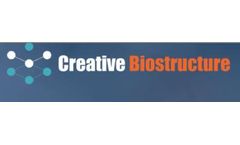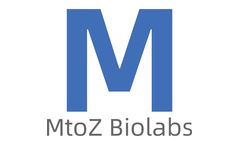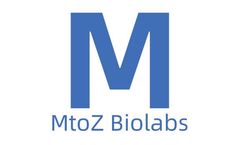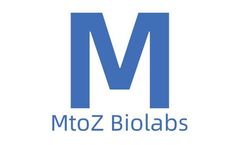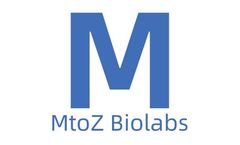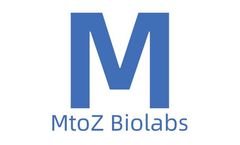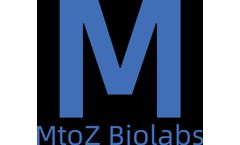Refine by
Chromatography Articles & Analysis
89 articles found
Advances in Purification Technologies Chromatography continues to dominate downstream processing. Protein A affinity chromatography is widely used for monoclonal antibody capture, but due to its high cost, researchers are investigating alternatives such as mixed-mode resins, synthetic ligands, and membrane-based affinity systems. Beyond capture, ion-exchange, ...
Recombinant MGP is typically purified using affinity chromatography and validated by SDS-PAGE, Western blot, and mass spectrometry to confirm integrity and modification status. ...
The gold standard for Sterol Lipids Analysis is a combination of chromatography and mass spectrometry (LC-MS/MS or GC-MS/MS). Chromatography (LC or GC): This first step acts like a molecular sorting system, separating the different sterol lipids from each other and from other molecules in the sample. ...
Mass Spectrometry (LC-MS/MS): This enriched sample is then analyzed by liquid chromatography-tandem mass spectrometry (LC-MS/MS). This highly sensitive technique measures the mass of the protein fragments, allowing for their precise identification and even pinpointing the exact site of ubiquitination. ...
Once sufficient protein has been expressed, purification processes, such as affinity chromatography, are employed to isolate the protein from the cellular components. ...
Advanced methods, such as liquid chromatography-tandem mass spectrometry (LC-MS/MS), are indispensable tools. ...
Purity and Concentration Analysis ServicePurity and concentration analysis is a fundamental service that assesses the quality of the RDC drug before it progresses to further testing. High-performance liquid chromatography(HPLC) and mass spectrometry (MS) are commonly employed techniques in this analysis. ...
Techniques such as affinity chromatography, size exclusion chromatography, and ion-exchange chromatography are typically employed to achieve high-purity products. ...
The single-domain antibodies are purified through affinity chromatography, which exploits their specific binding to the antigen or an engineered tag. 6. ...
Analytical Chemistry: Methods like HPLC (High-Performance Liquid Chromatography) and mass spectrometry can be used to analyze secreted products, confirming the functional characteristics of the cells. ...
Common approaches include: High-Performance Liquid Chromatography (HPLC): This is a reliable and widely used method for separating and quantifying NAD and NADH in complex biological samples. ...
Key Analytical Techniques Liquid Chromatography-Mass Spectrometry (LC-MS): LC-MS is the gold standard for glucosinolate analysis. It provides high sensitivity and specificity, allowing for the accurate identification and quantification of glucosinolates and their metabolites. Gas Chromatography-Mass Spectrometry (GC-MS): GC-MS is particularly useful for analyzing ...
One of the most effective methods is mass spectrometry (MS), often combined with liquid chromatography (LC-MS). This technology enables the detailed identification and quantification of lipids and metabolites from small samples like exosomes, which are typically limited in number. ...
Accurate analysis and monitoring of the components of the medium can help researchers and manufacturers optimize the production process, increase yield, and ensure the safety and effectiveness of the final product.Technologies for Analyzing the Components of Antibody Drug Culture Media1. High-Performance Liquid Chromatography (HPLC)(1) HPLC can be used to quantitatively analyze ...
For instance, High-Performance Liquid Chromatography (HPLC) and Capillary Electrophoresis (CE) can be used to analyze the types and quantities of proteins and amino acids; Gas Chromatography (GC) and Mass Spectrometry (MS) can be used to analyze the composition of sugars and lipids; various biochemical analysis methods can be used to measure the content of growth ...
The measurement of collagen can help researchers and physicians understand the pathological process of related diseases (such as osteoporosis, arthritis, skin aging etc.), and also aid in drug development and other biomedical research.The measurement of collagen can usually be carried out through several different methods:Mass Spectrometry1. Proteomic AnalysisLiquid ...
Here are some commonly used methods for determining collagen content.ChromatographyHigh-performance liquid chromatography (HPLC) is a commonly used method for quantitatively analyzing collagen and other proteins. ...
For example, some proteins may be upregulated or downregulated in health and disease states, or between normal and treated cells.Detection MethodsThe most commonly used technique is mass spectrometry, particularly liquid chromatography-tandem mass spectrometry (LC-MS/MS). Additionally, two-dimensional electrophoresis and Western blotting are frequently used to study differential ...
This method can provide detailed information about the types and locations of glycation modifications.2. High Performance Liquid Chromatography (HPLC)HPLC is a commonly used technology that can be used to separate and quantify glycation products in collagen.3. ...
These particles become a series of zones, each particle in its own density zone. Chromatography 1. Gel filtration chromatography Gel filtration chromatography separates substances by molecular size. ...






